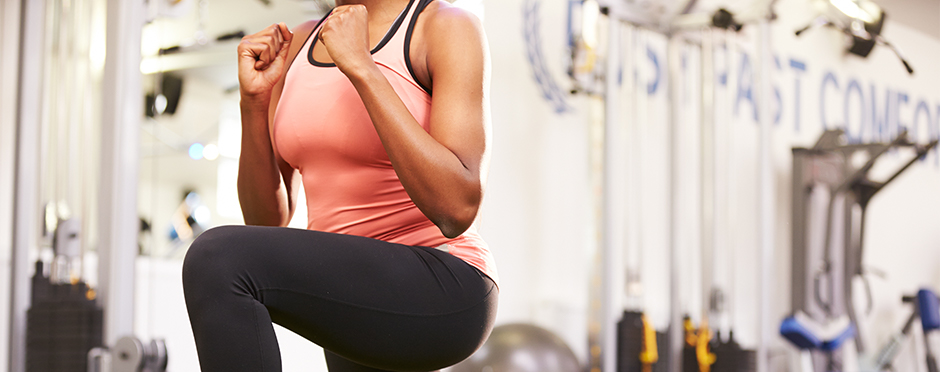
Warming Up vs Cooling Down: Things To Know
1 CommentPicture this – you walk into your local gym after carving out time in your day to work out.. You come prepared with your headphones in, new favorite song turned up, and a game plan full of all the exercises you’re going to accomplish that day. You scan the gym and see your favorite machine with no one else on it calling your name. You scurry to it, get settled in, and just as you’re about to start you think to yourself, “I probably should warm up, shouldn’t I?”
We’ve all been here. Most people at one time or another have followed some sort of workout plan in hopes of becoming more physically fit, and yet so often these programs neglect any sort of warm up or cool down. All too often people end up in physical therapy with workout related injuries, many of which can be attributed to poor warm ups/cool downs. In fact, in 2012 roughly 500,000 people were injured while exercising or using exercise equipment.1 Gym-goers are not alone. A review of the incidence of running injuries shows that the average recreational runner has anywhere from a 37 to 56 percent chance of injuring themselves.2
With a proper warm up and cool down prior to activity of any sort, these rates of injury can be decreased and the ever-dreaded soreness after exercise can be lessened.. A proper warm up is very different than a proper cool down, so it is important to understand what should be incorporated into each of these. Here are some tips to guide a safe, effective warm up, cool down and overall workout.
The Warm Up
Contrary to popular belief, static stretching is not the best way to get ready for a workout. Static stretching helps to lengthen and relax muscles, which while important (see below), is not the most effective way to get your body ready for physical exertion. Instead, what is called a dynamic warm up is best for pre-exercise. These are movements designed to increase the mobility of muscles, tendons and ligaments surrounding the areas of the body you’ll be using for exercise, as well as increase the mobility of the joints themselves. These movements help prime your body for more strenuous physical exertion, begin to get your heart rate up in preparation for activity, and increase blood flow to the areas to supply muscles and tendons with nutrients during the workout. All this effectively decreases the chances of causing injury to a muscle or joint that creates force to perform any type of workout movement. A few examples of these movements include:
- Body weight squats
- Forward and backward lunges
- Sidestepping in a slight squat position with a band around your knees
- Jumping jacks
- High Knees
- Jogging Butt Kickers
- Forward and side planks
The Cool Down
Following a workout, muscles have exerted force for an amount of time and have the tendency to get tight. The cool down is essential to restore muscles to their proper flexibility to prevent tightness, muscle imbalances and decrease the risk of overuse injuries. Stretching is also a great way to gradually decrease your heart rate after a workout and can help decrease the amount of soreness felt later that day/the next day following exercise. A stretch should be performed for any muscle or muscle groups that were used during that workout. Stretches should be held for 30 seconds and should NOT be to the point of pain.
The use of foam rollers for warming up and cooling down has gotten much more popular over recent years, and for good reason. Using a foam roller can be beneficial for both warming up and cooling down, as well as in between workouts. The pressure of the roller may be a bit uncomfortable at the time, but no sharp pain should be felt. Foam roll use helps to mobilize the tissue making movement easier afterward and will also help work out any soreness that is felt through the muscles.
The proper use of warming up and cooling down has a variety of benefits in combination with a safe and effective workout routine of any kind. Using these methods will help improve workout function, decrease risk of injury while working out and improve recovery from workout to workout. As always, consult your physician and/or physical therapist with any pain you may be experiencing with activity.
The Athletico blog is an educational resource written by Athletico employees. Athletico bloggers are licensed professionals who abide by the code of ethics outlined by their respective professional associations. The content published in blog posts represents the opinion of the individual author based on their expertise and experience. The content provided in this blog is for informational purposes only, does not constitute medical advice and should not be relied on for making personal health decisions.
REFERENCES:
1. Johnson, Kristen. “Gym Accident Statistics.” LegalMatch, http://www.legalmatch.com/law-library/article/gym-accident-statistics.html
2. Van Mechelin, W. “Running injuries. A review of the epidemiological literature.” Journal of Sports Medicine. 14, no. 5, 1992, pg 320-35.

1 Comment
ramakrishnan
Warm up before a workout is very essential because without warming up muscles are not prepared for firing in a maximum throughput and will also lead to injury. Thanks for sharing this information on warmup movements.